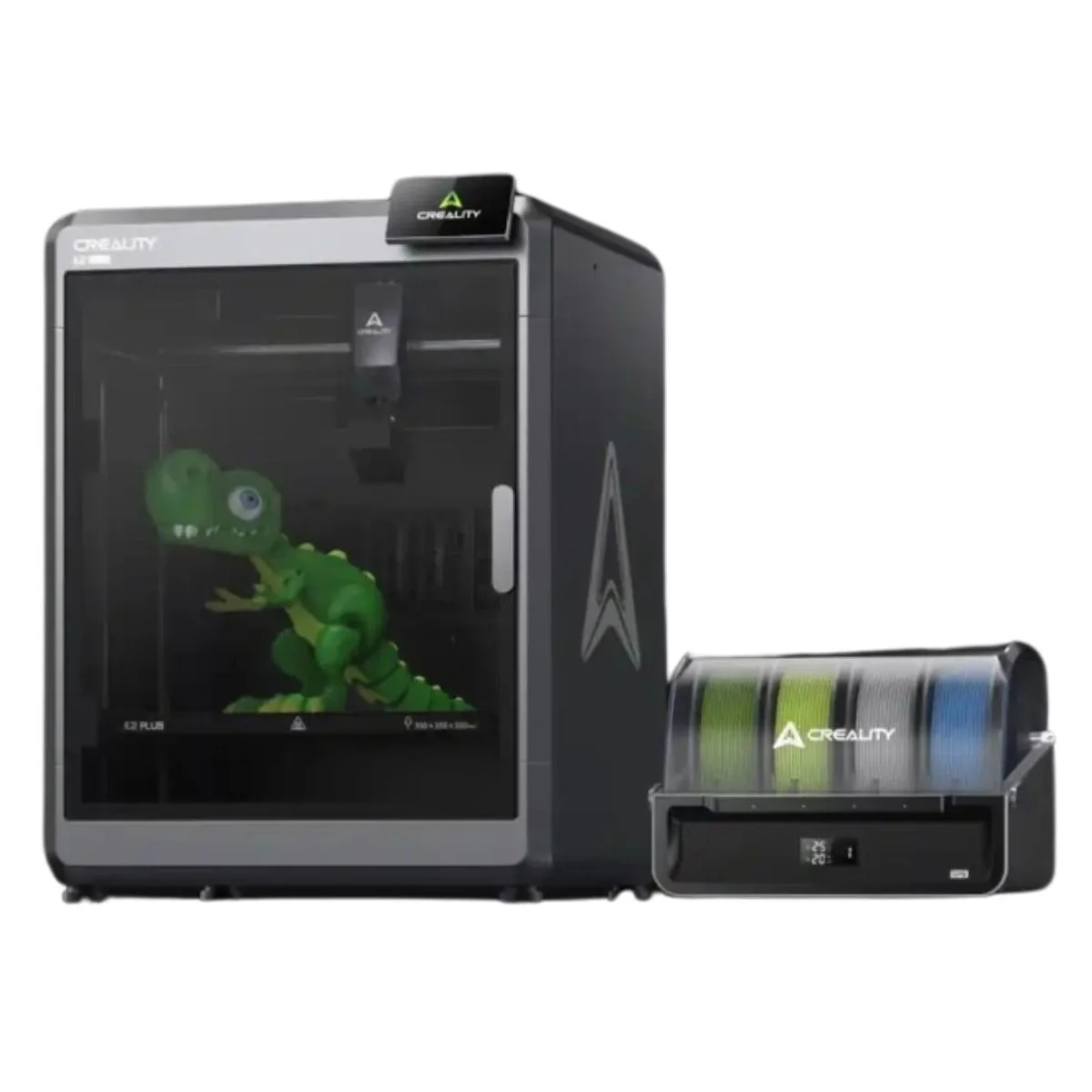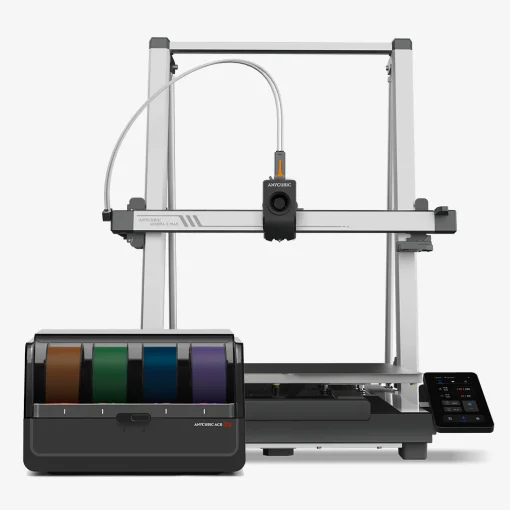Compare K2 Plus vs Kobra 3 Max Combo
Comparison between the best 3D printers
Choose the best 3D printer at the best price. The cheapest 3D printers are here.
Buy a 3D printer here with 3D Fila.
 |
 |
|
| Model | K2 Plus[BUY K2 Plus] |
Kobra 3 Max Combo |
| Printing Material | Filament | Filament |
| Buy Filament for Creality K2 Plus | Buy Filament forAnycubic Kobra 3 Max Combo | |
| Estimated price | $1500,00 | $699,00 |
| Manufacturer | Creality | Anycubic |
| Release Year | 2024 | 2025 |
| Print Volume [mm] | 350x350x350 | 420x420x500 |
| Printer Size [mm] | 495x515x640 | 640x753x706 |
| Weight [kg] | 33,5 | 23,6 |
| Power Loss Recovery | YES | YES |
| Enclosed printer | YES | NO |
| Bed Leveling | Automatic | Automatic |
| Filament End Sensor | YES | YES |
| Bed type | Heated | Heated |
| Power supply system | Direct Drive | Bowden |
| Standard nozzle | 0,4 | 0,4 |
| Maximum Nozzle Temperature [°C] | 350 | 300 |
| Maximum Bed Temperature [°C] | 120 | 90 |
| Maximum printing speed [mm/s] | 600 | 600 |
| Filament holder | YES | YES |
| Camera for supervision | YES | YES |
| Recommended filaments | PLA, PETG, PET, TPU, PA, ASA, PC, PLA CE, PA-CF, PET-CF | PLA, PETG, TPU |
| Recommended slicers | Creality Print 5, Bambu Studio, Super Slicer, Cura, Prusa Slicer, Orca Slicer | Anycubic Slicer, Cura, Orca Slicer |
| Maximum Resolution [mm] | 0,1 | 0,01 |
| Processor | ||
| Display | Touchscreen 4,3'' | Touchscreen 4,3'' |
| Power Supply | 1200 W | 800 W |
| Connectivity | USB / WIfi | USB, Wifi |
| Operating systems | Windows, Linux, Macbook | Windows, Mac, Linux |
| Date of registration in the system | 2024-06-26 | 2025-03-06 |
| Release date | 2024 | 2025 |
| Extra features | The Creality K2 Plus 3D Printer stands out for its multicolor printing, large build volume (350x350x350 mm) and Apus Direct Drive extruder with tri-metal protection nozzle. It features automatic anti-tilt leveling, FOC closed-loop motors and active chamber heating. In addition, it has an intelligent CFS filament management system, cameras for calibration and monitoring, a 4.3-inch touchscreen and advanced sensors to optimize the printing process. | The Anycubic Kobra 3 Max Combo combines high-speed and multicolor printing with up to 8 colors. It features automatic leveling, quick filament switching, clog and entanglement detection, and AI to prevent print failures. Its 800W hotbed heats up quickly, while 10,000mm/s² acceleration ensures efficiency. App and Wi-Fi control, print recovery, and video monitoring enhance the user experience. |
| Support for multiple colors and materials (AMS and CFS) | YES | YES |
Notes * |
||
| Cost-benefit | 7 / 10 | 7 / 10 |
| Hardware | 7.2 / 10 | 6 / 10 |
| Tela | . | . |
| Print volume | 4 / 10 | 4 / 10 |
| Performance | 5 / 10 | 5 / 10 |
| [BUY K2 Plus] |
Conclusion |
| In comparing the Creality K2 Plus and the Anycubic Kobra 3 Max Combo, several key factors emerge that highlight the strengths and weaknesses of each 3D printer. The **Creality K2 Plus** is positioned as a more premium option, offering features like a sturdy enclosed frame, a larger maximum nozzle temperature, and robust material compatibility, which make it well-suited for multi-material printing. Its advanced sensor suite and camera for monitoring enhance the overall printing experience. However, its higher price point does make it a significant investment and it is slightly heavier than the Kobra 3 Max Combo. On the other hand, the **Anycubic Kobra 3 Max Combo** provides a larger build volume and a lower price, making it attractive for budget-conscious users and those needing a spacious printing area. Though it lacks an enclosed design, it compensates with rapid heating and advanced features like AI for failure prevention and an accelerated printing speed, all of which contribute to a user-friendly experience. Despite being more economically priced, it still offers a respectable range of functionalities suitable for various materials. Ultimately, the choice between these two 3D printers boils down to the user's specific needs. If premium features, material versatility, and a robust design are priorities, the K2 Plus may justify its cost. Conversely, for those seeking a high-performance printer without as steep an investment, the Kobra 3 Max Combo emerges as a solid option. Thus, it is essential to evaluate the intended use, budget constraints, and desired features to determine the best fit. |

